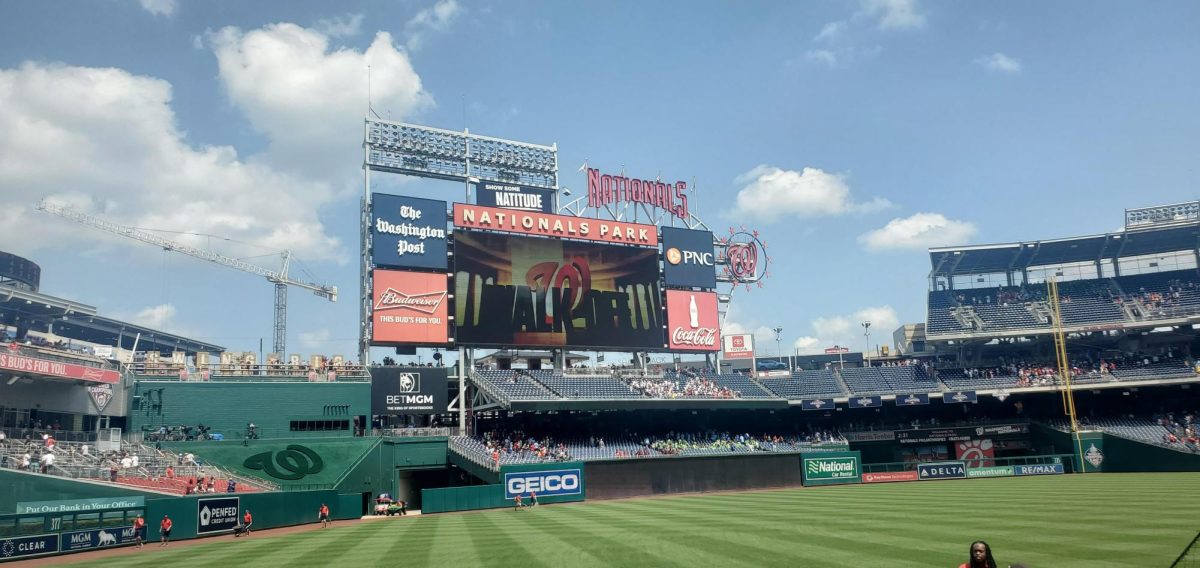In an era where headlines about climate change, plastic killing aquatic life, and the Great Pacific Garbage Patch dominate, it is uncommon to see the efforts of attempts to protect the environment highlighted. In fact, the nation’s capital is considered to be the second-most green city in the United States, only behind Portland Oregon. One specific area where changes have continued to develop is by the baseball field at Nationals Park.
Located on the green line of the Metro, Nationals Park reduces the amount of carbon emissions by providing a public transportation option. However, the Nationals’ efforts to leave a positive impact on the environment stretch beyond the typical public transportation solution.
Professional sports stadiums are notorious for littering, as after every game, empty beer cans, bottles, and food baskets linger underneath the rows of seats. One of the more recent innovations the Nationals have implemented is a bottle deposit system, commonly seen in European nations. In this system, empty aluminum and plastic bottles are deposited into the machine.
To support the surrounding community as well as their own stadium, the Nationals grow a rooftop garden each year. The plants harvested are sent to local food banks and used at select food stands across the stadium. The garden covers 6,000 square feet and produces over 800 lbs of food each year, most of which gets donated to wards seven and eight in D.C., areas that have high rates of assisted housing and poverty. Along with providing food for the surrounding communities, the rooftop space cuts down on the amount of dark or concrete area absorbing sunlight. This ultimately will contribute to efforts against climate change, as less heat will be trapped in the atmosphere of D.C., as well as more plant life around the urban area.
A unique trait to Nationals Park is its location on the Anacostia River. To minimize water pollution, the stadium developed a water system that separates rainwater from water used throughout the stadium. The system also includes technology that detects smaller waste, like peanut shells, so that it can be filtered out of the rainwater.
With the constant discussion of killing the environment, it is also crucial to discuss the solutions, whether they are unique or an innovation if an already existing idea. The environment should primarily be seen in a positive light, so that the ideas of the massive world around us brings optimism and encourages others to join in finding out how to help the environment.







